WSS 3.0 Installation
Hardware and Software Requirements
Before you install WSS 3.0, make sure your computer has the recommended hardware and software. Your server computer must meet the following hardware and software requirements.
Hardware Requirements
- A dual-processor computer with processor speed 2.5 GHz or higher.
- A minimum of 1GB RAM; however 2GB RAM is recommended for improved performance.
Software Requirements
- Windows Server 2003 SP2 as the Operating System.
- The file system used by the OS must be NTFS.
- The computer must be configured as a web server running Microsoft Internet Information Services (IIS) in IIS 6.0.
- .NET framework v3.0 or higher which enables ASP.NET 2.0 and includes Windows Workflow Foundation 3.0.
- SQL Server 2005 Express Edition with Advanced Settings.
Installing WSS V3.0 (Basic Mode)
Prerequisites
- Windows Server 2003 Enterprise Edition with SP2 installed.
- .NET Framework 3.0.
- ASP.NET 2.0 installed and Web Services Extension enabled.
- SQL Server 2005 with Advanced Settings installed.
Installation Steps
- Double click the Sharepoint.exe, it will start the installation process.
- Choose the installation type you want to install (from Basic, Advanced), here Basic is chosen.
- The setup will now apply the updates to the installation.
- Click Next to continue with the installation.
- The setup will now configure with the installation settings and installation will complete. The following screens will guide you through the process.
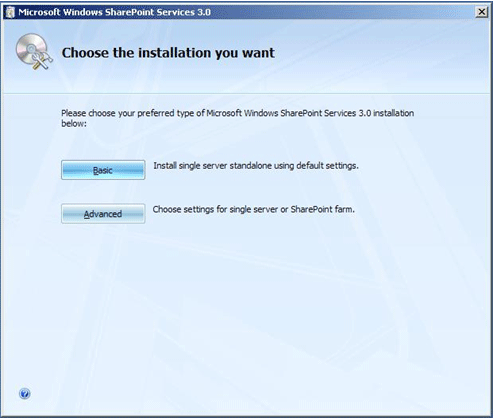
Figure 1.1 Basic Mode installation of WSS3.0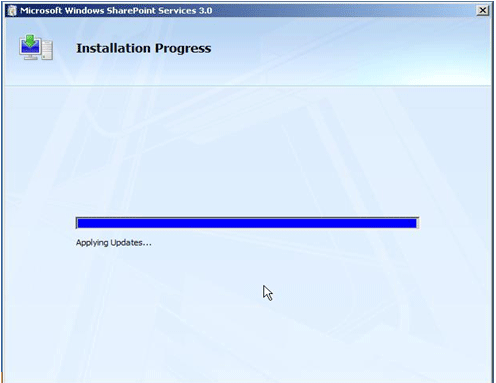
Figure 1.2 Applying updates to the installation.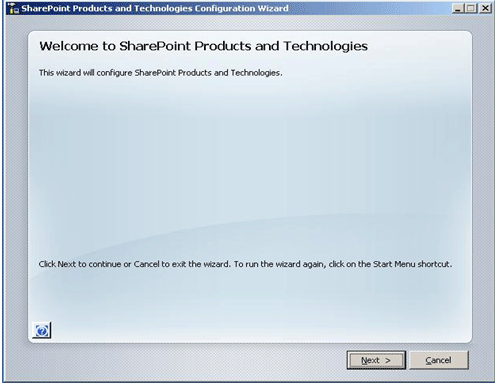
Figure 1.3 Configuration Wizard in Basic Mode of installation.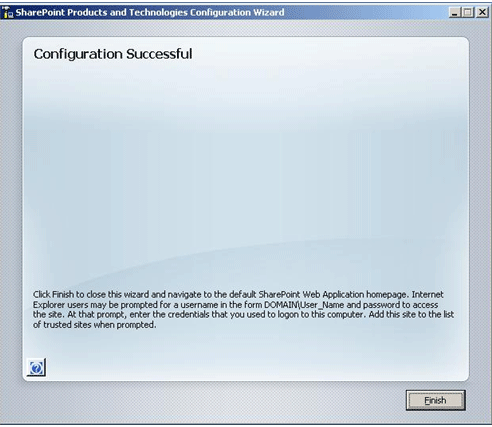
Figure 1.4 Configuration of WSS 3.0 is complete with default configuration.
Installing WSS 3.0 (Advanced Mode)
Prerequisites
- Windows Server 2003 Enterprise Edition with SP2 installed.
- .NET Framework 3.0.
- ASP.NET 2.0 installed and Web Services Extension enabled.
- SQL Server 2005 with Advanced Settings installed.
Installation Steps
- Double click the Sharepoint.exe, it will start the installation process.
- Choose the installation type you want to install (from Basic, Advanced), here Advanced is chosen.
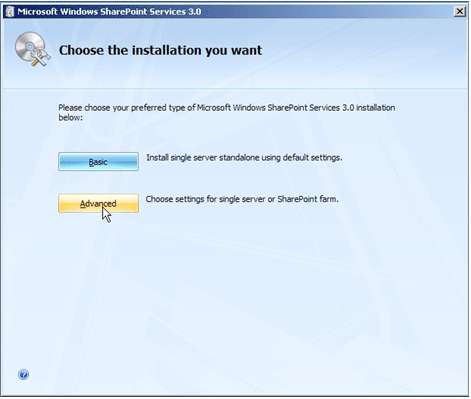
Figure 1.5 Advanced Mode installation of WSS 3.0
- In Server type tab; there will be two option as Web Front End and Stand-Alone.
a. Web-Front End: Only install components required to render content to users. Can add servers to form a SharePoint Farm.
b. Stand-Alone: Install all components on a single machine (Includes Windows Internal Database). Cannot add servers to create a SharePoint Farm. - Here in this installation Web Front End server type is chosen. As in this server type we can add servers to form a SharePoint Farm.
- In Data Location tab: choose the path of your search index files to be stored on the local hard drive.
- Start the installation by clicking on Install Now.
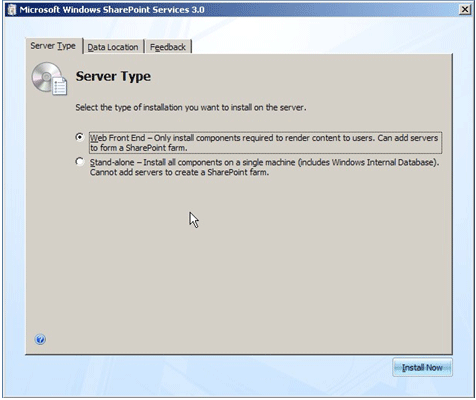
Figure 1.6 Selecting the Server type.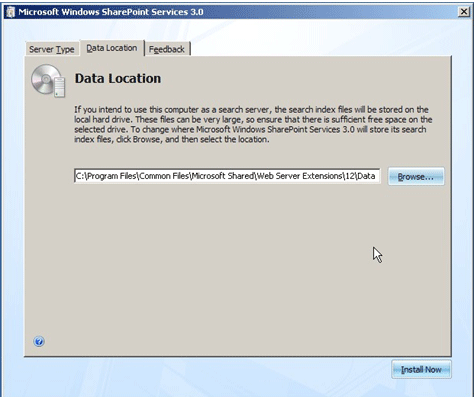
Figure 1.7 Choosing the location where the Data files will be stored.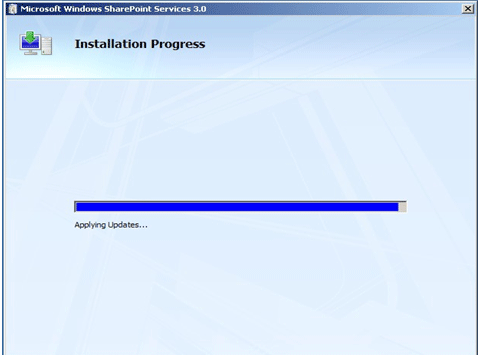
Figure 1.8 Starting the installation and applying updates. - After the installation is finished the configuration wizard will start; by checking the box prompted as "Run the SharePoint Products and Technology Configuration Wizard now". As shown below
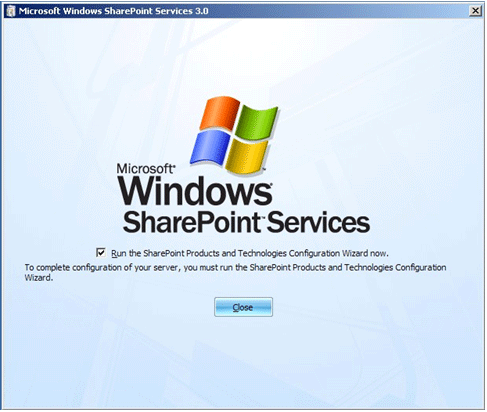
Figure 1.9 Finishing the installation & starting the configuration wizard.
Configuring SharePoint Products and Technology
Prerequisites
- Name of database server and database where server farm configuration data will be stored.
- Username and password for the database access account that will administer the server farm.
Configuration Steps
- The configuration wizard requires the following services to be started or reset during the configuration
- Internet Information Services.
- SharePoint Administration Services.
- SharePoint Timer Service.
By clicking Yes the services are started or reset and to proceed for the configuration wizard.
-
- The Next screen in the wizard asks for the following options
- Connect to an existing server farm.
- Create a new server farm.
If there is a server farm you want to connect with to share configuration data; then connect to the server farm or create a new one.
Here creating a new farm is selected, as there was no availability of server farms in the system.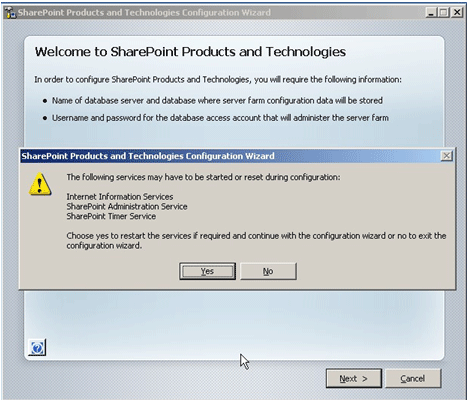
Figure 1.10 Requirements to proceed with configuration wizard.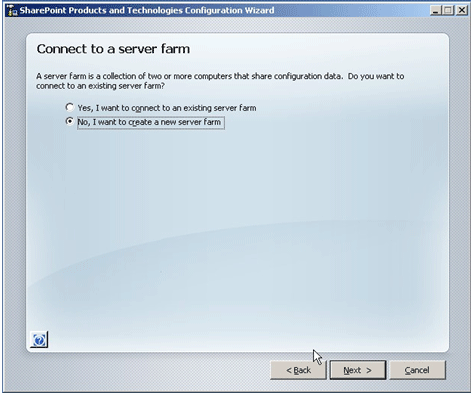
Figure 1.11 Connect to a Server Farm. -

Comments